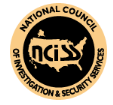In the late 1990s, pharmaceutical companies convinced doctors that prescription opioids were not particularly addictive. This led to doctors prescribing opioid pain medications at greater rates, leading to the rampant misuse and abuse of prescription opioids. As the prescriptions were scaled back, more and more people turned to heroin and illicit synthetic opioids like fentanyl. Today, approximately 130 people die from overdose daily – both prescription opioids and illicit. It is estimated that over 80% of those currently living with opioid addiction first began with misuse and abuse of prescription opioids. As of the writing of this blog, drugmakers and distributors just reached a settlement in a massive civil lawsuit in Ohio involving several pharmaceutical companies and distributors, just one day before trial was about to begin. The lawsuit is only one of more than 2,600 lawsuits against pharmaceutical companies, distributors and pharmacies. The question is, where are we now? Is the epidemic getting better in any way?
Current State of the Opioid Epidemic
Is it getting better? In a word, no. An estimated 2 million Americans are living with opioid addiction and over 400,000 have died since the crisis began. In 2018, there were more than 70,000 overdose deaths in the United States. More than 31,500 of those deaths were due to illicit synthetic opioids like fentanyl. The rate of opioid overdose deaths linked to fentanyl has doubled each year from 2013 on. An estimated 10.3 million people misused prescription opioids in 2018. The death toll continues to climb and shows no sign of slowing down.
One big change has been noted; the rate of opioid-related overdoses is now growing faster in large cities compared to more rural areas. This shift shows opioid overdoses growing by 21% in rural areas compared to 54% in large cities. Overdose numbers have continued to climb across all types of cities and towns, however the shift in growth from rural areas to urban areas is notable. This shift was also true of all types of opioid-related overdoses – prescription opioids, heroin and synthetic illicit opioids.
In South Carolina, the rate of opioid overdose deaths rose 7.8% from March of 2018 to March of 2019. Nationwide, the number of naloxone (Narcan) prescriptions doubled from 2017 to 2018. Naloxone is an overdose-reversing drug used to save the life of a person who has overdosed.
Where Do We Go From Here?
In 2017, the U.S. Department of Health and Human Services declared the opioid epidemic a public health emergency. They have announced a 5-point strategy to help combat the epidemic. This strategy includes:
1. Better prevention, treatment services and recovery services
2. Better data, including data collection and better use of the data
3. Better pain management options for both temporary needs and chronic pain needs
4. Better availability of overdose-reducing drugs such as naloxone
5. Better research
Other efforts around the country to combat the epidemic include stronger partnerships with law enforcement, growing prevention efforts and increasing support for healthcare providers and systems. Another important factor in stopping this epidemic is raising public awareness about the dangers of prescription opioids and illicit opioids.
Avoid prescription opioids whenever possible. When you do have to take a prescription opioid, be careful to avoid misusing the drug – don’t take it more often than prescribed, in higher doses than prescribed or in ways other than prescribed (example: crushing and snorting). It’s important to understand that prescription opioids are highly addictive and misuse or abuse of these medications can quickly spiral into addiction.










